You can trust Cyclingnews
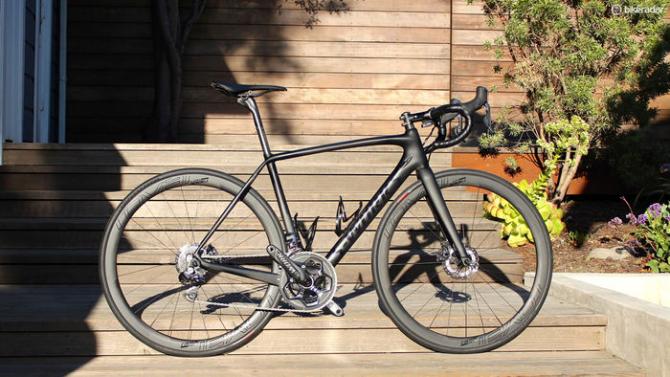
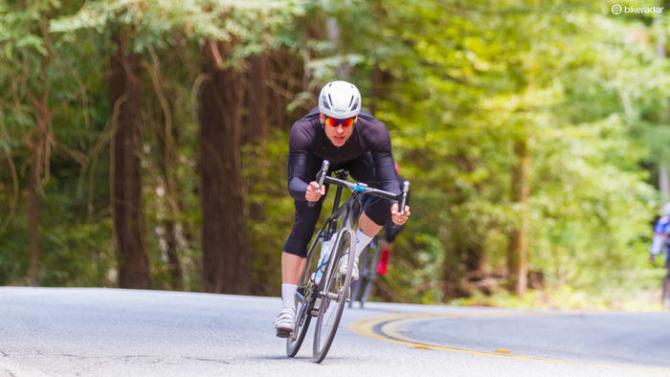
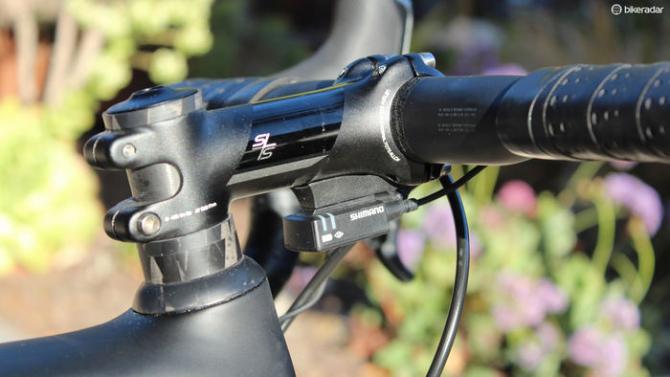
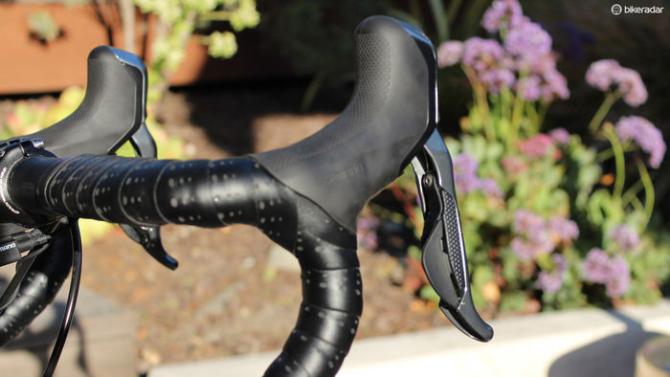
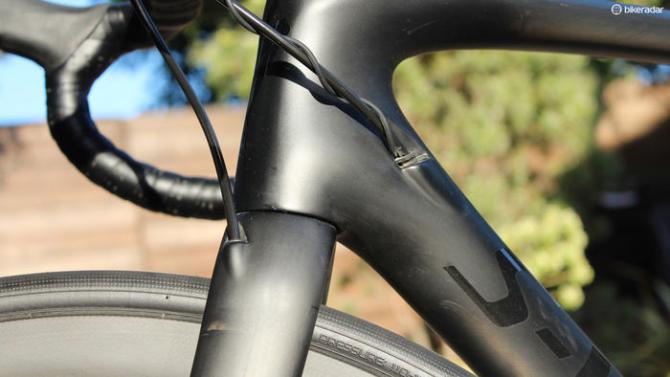
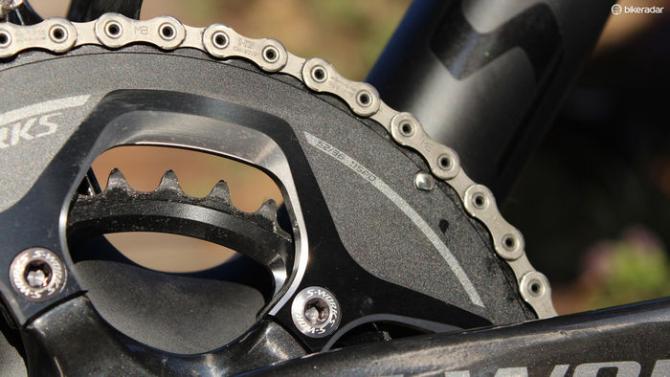
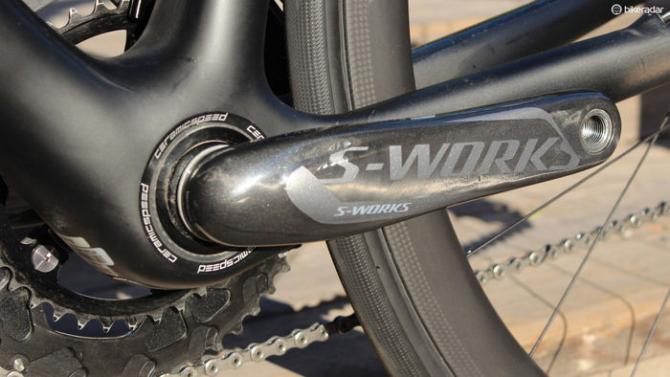
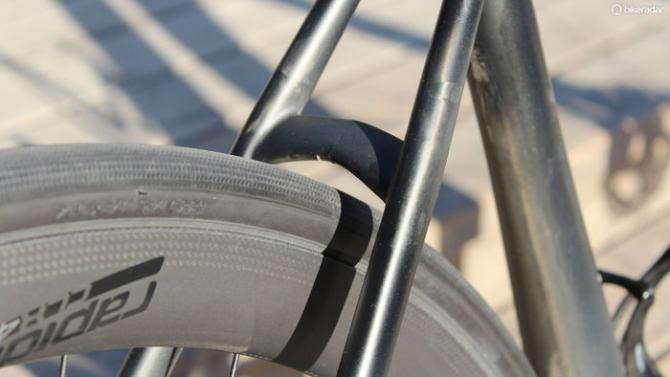
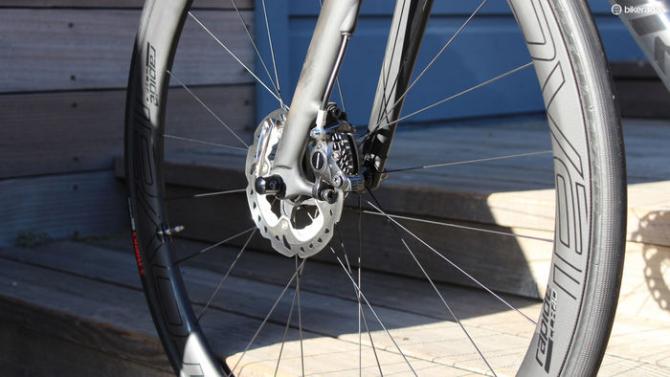
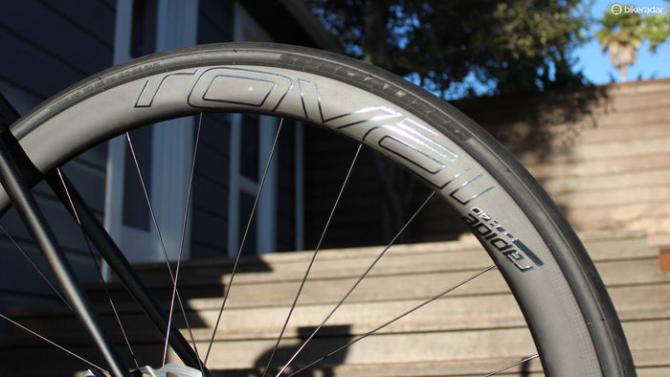
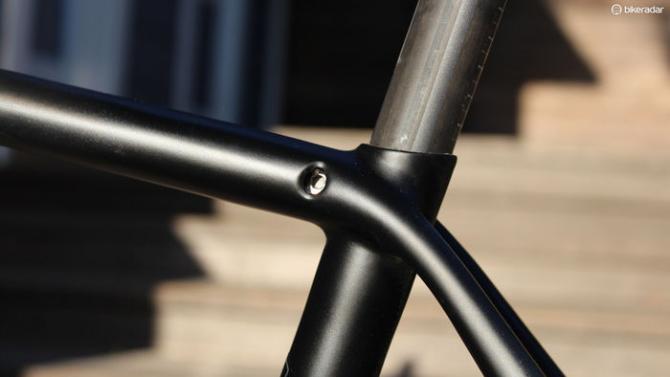
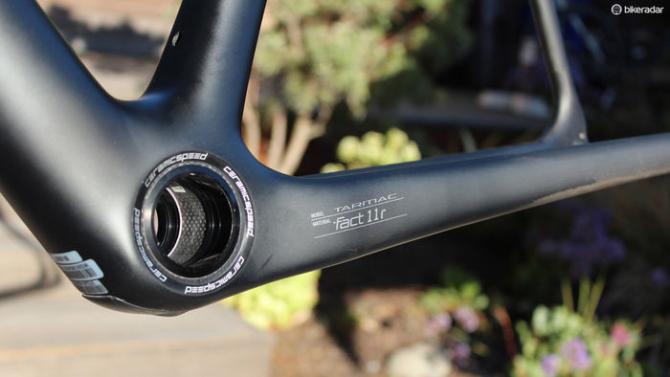
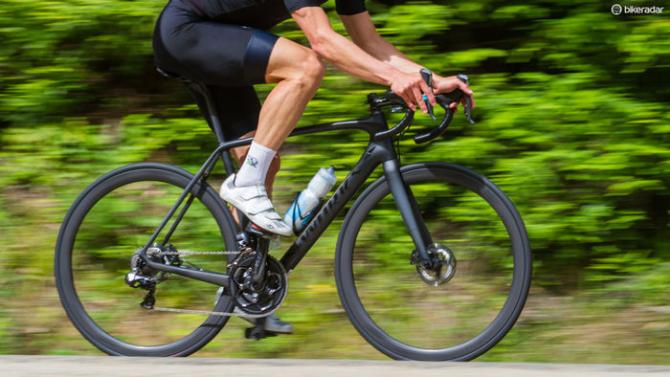
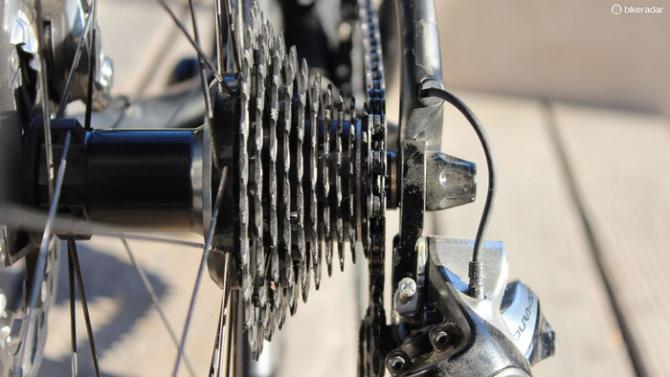
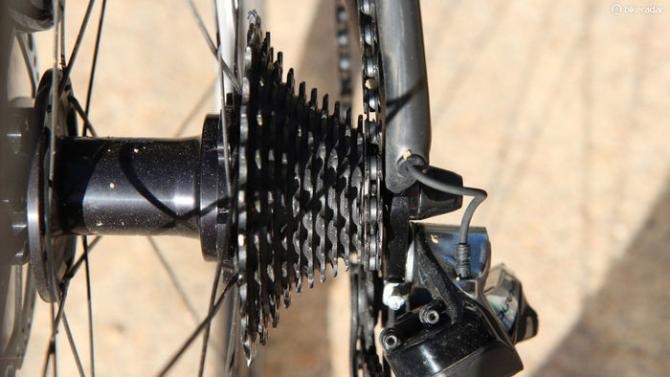
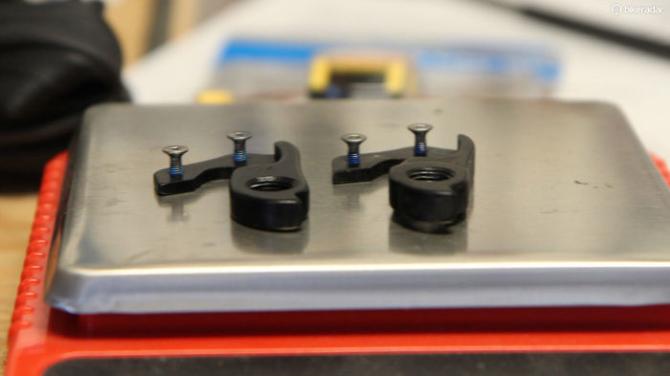
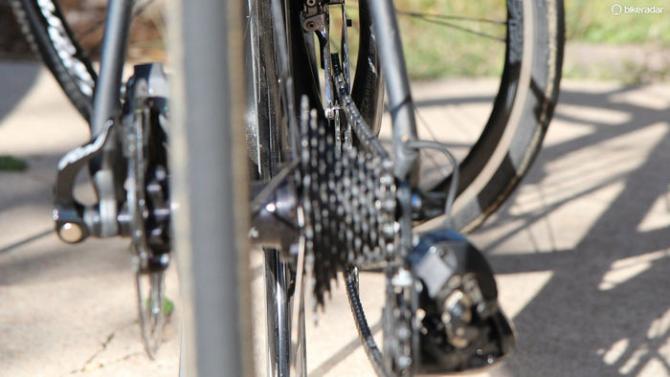
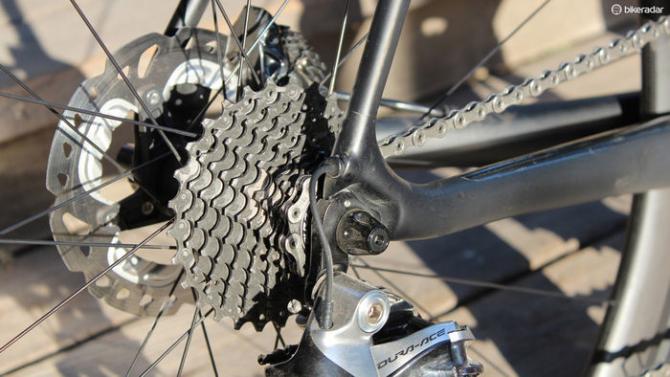
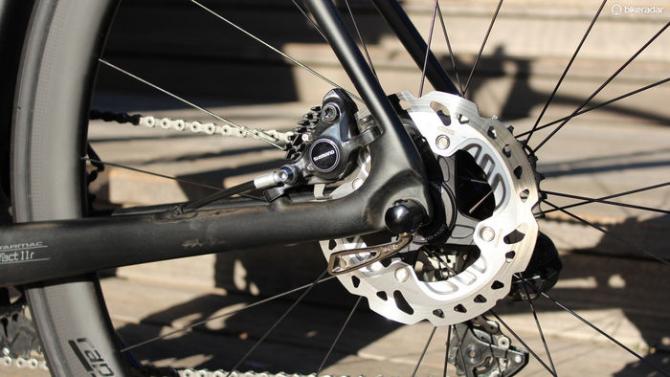
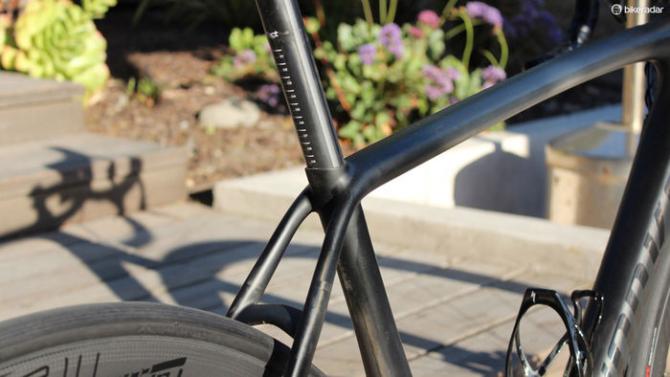
This article originally appeared on BikeRadar
Let's not beat about the bush here. The S-Works Tarmac Di2 Disc is without question the best road race bike with discs we’ve ever ridden. With a proprietary hub design, the Tarmac Disc retains the sharp, lively handling of the regular S-Works Tarmac while adding in the best-in-class Shimano R785 hydraulic brakes and Di2 shifting.
However – and this could be a big however, depending on your preferences – you are basically locked into using the Roval wheels.
Another qualifier to the opening statement: there aren’t actually that many road race bikes with disc brakes in existence, at least not yet. With modern road bikes largely segregated into ‘endurance’ (long wheelbase, tall head tube) and ‘race’ (short wheelbase, short head tube), most of the disc road bikes you are seeing fall into the former category, in large part because the geometry is much more accommodating.
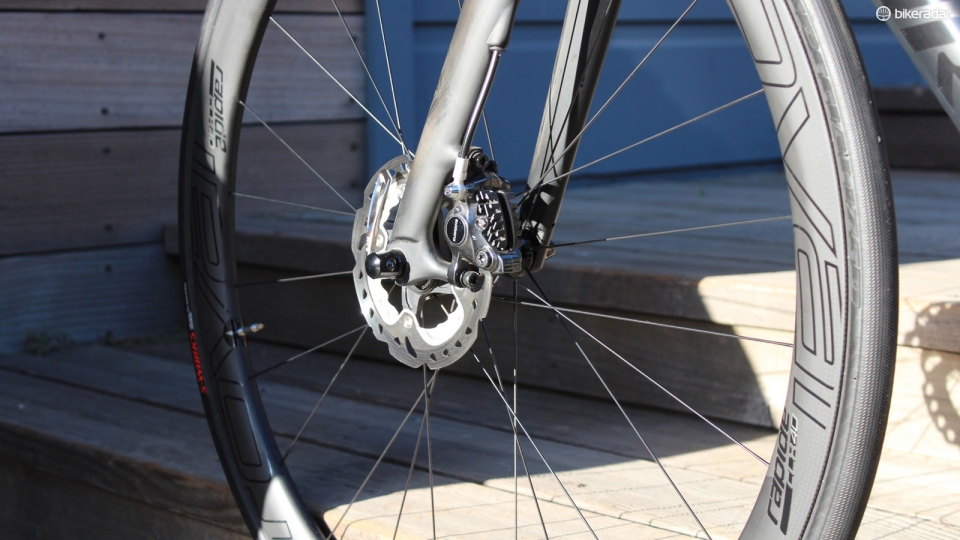
Shimano 140mm rotors front and rear
Adding discs to road bikes has forced engineers to negotiate how adding width at the hub — up to 135mm from the standard road 130mm — affects the rear triangle, the drivetrain and the overall performance.
On a race bike with short chainstays, simply widening the hub would cause shifting issues to the point that Shimano and SRAM recommend chainstays of at least 420mm.
Specialized’s solution was to move the cassette inboard on the 135mm Roval hub, putting it where a cassette would normally sit in a frame on a 130mm hub. This provides the stiffness from most of the extra width and spoke triangulation of a 135mm hub and keeps the chainline within Shimano's parameters while maintaining the short, 405mm chainstays that help give the Tarmac its immense rear-end stiffness and quick handling. Among the few road race bikes with discs – such as the Pinarello Dogma 65.1 Hydro and the Bianchi Infinito CV Disc (which you could argue is more endurance than race) – the Tarmac has the shortest stays.
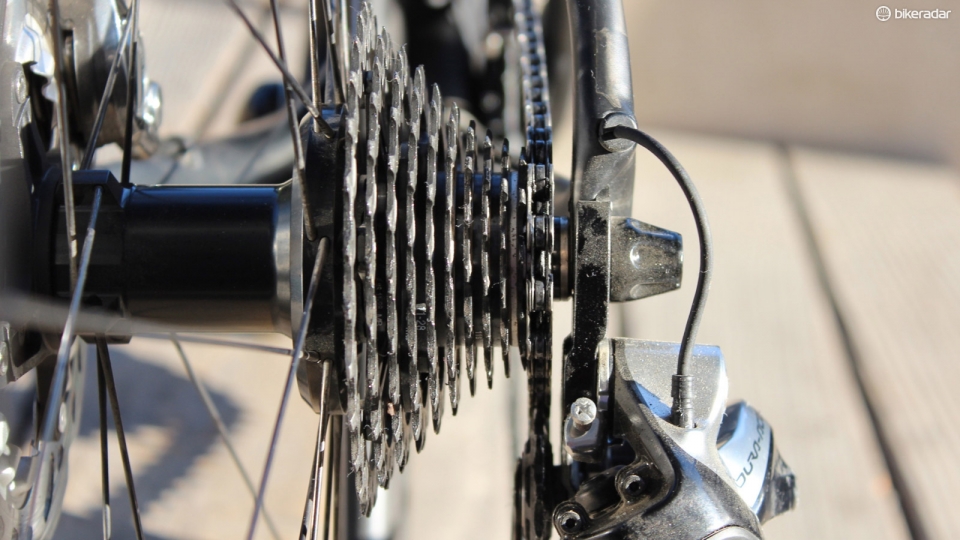
A main point of difference for the Specialized Tarmac Disc is the rear hub spacing
The downside, however, is that you can’t switch the rear wheel without 30 minutes of work and the loss of a couple of gears. Changing wheels requires changing derailleur hangers and adjusting the brake caliper. In our experience, it also meant that you couldn’t cross-chain in the 36/11 or 22 without the chain snagging on the backside of the big ring.
Further complicating the situation is the uncertain future of axle standards. It seems quite likely that thru-axles of some specification will soon be the norm. Specialized is holding the line with quick-release axles on this Tarmac Disc (more on the quick releases below).
Examined alone, this is a five-star, best-in-class machine. The ride is outstanding, with Tour de France-level handling and acceleration, plus top-shelf hydraulic braking and Shimano’s industry-leading electronic shifting. But if you are a rider who likes to swap wheelsets, this is not the bike for you.
Ride and handling: a best-of-both-worlds situation – nimble, lively feel with plush braking
In creating the new Tarmac, Specialized engineers effectively designed six bikes – one for each size – instead of their previous method of designing a 56cm frame and then calculating the differences for other sizes. For this tester (who rides 56cm) however, there was no perceptible change in ride quality. In fact, the most remarkable thing about the Tarmac Disc was how darn-near identical it handled to the standard Tarmac. Accelerating, cornering, descending at speed — the Tarmac Disc is indistinguishable from a Tarmac, which, if you like race bikes, is really, really good. At the bike’s launch we did a big ride on the Tarmac Disc followed by a second big ride on the Tarmac. Sure, you can tell the weight difference when lifting each, but on the bike? Hardly.
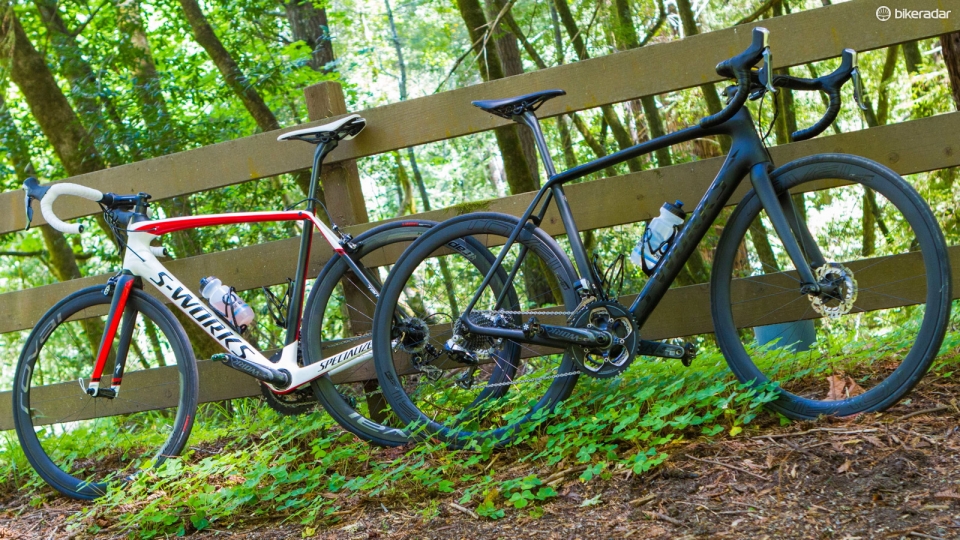
We rode the 2015 S-Works Tarmac and S-Works Tarmac Disc back to back on big rides, then spent a few months on the Tarmac Disc
The bike does get a touch more compliance than previous models thanks to the seatpost collar being set into the top tube junction. What this means is more seatpost flex on the 27.2mm post. Relatedly, Specialized engineers long resisted any sort of aero post or thicker post for the simple reason that doing do means less flex and less comfort. The aero Venge was the first, and is so far the only, exception to that rule.
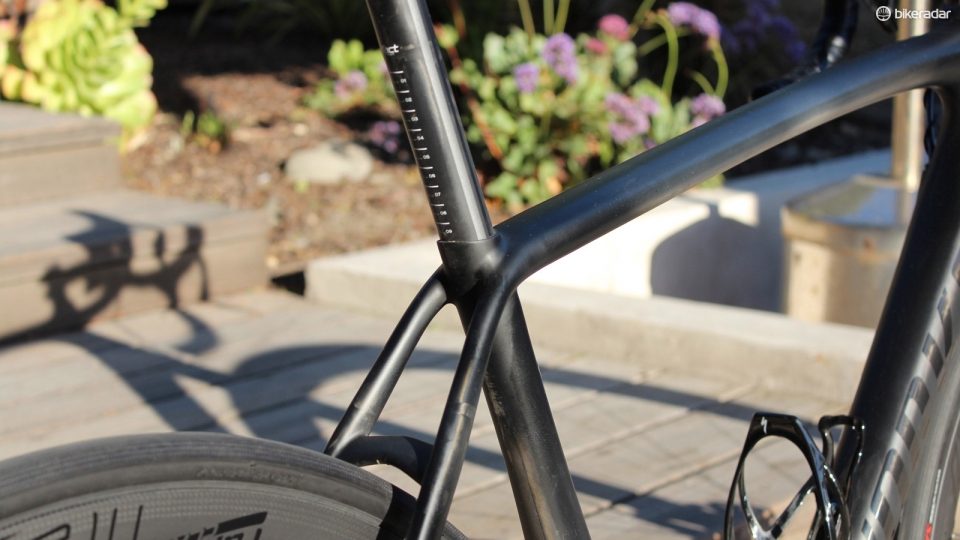
The Specialized Tarmac has a recessed seatpost clamp for a clean look, weight reduction and an additional 35mm of unrestrained seatpost
To go on further about the chainstay point, the bike’s handling is absolutely remarkable for a disc road bike. Longer chainstays almost always translate into a longer-handling bike (think truck versus sports car) and a little less immediacy in accelerations. Here, the handling is identical to the S-Works Tarmac rim-brake machine, as the geometry is identical. With rim-brake race bikes, be they Specialized or Trek or Cannondale or Scott, the geometry has been honed over the years for handling, with fewer parameters enforced by other components. Here, the Tarmac Disc absolutely doesn’t compromise.
Components: top-shelf electronic, hydraulic and carbon kit
Although Shimano has yet to release a complete Dura-Ace hydraulic/electronic group, the R785 is the best on the market. Here, the bike combines non-series R785 levers with Dura-Ace Di2 derailleurs and R785 hydraulic discs.
For our money, Di2 is a better, more dependable electronic option than Campagnolo’s EPS, and the R785 offers a better road hydraulic brake option than SRAM’s.
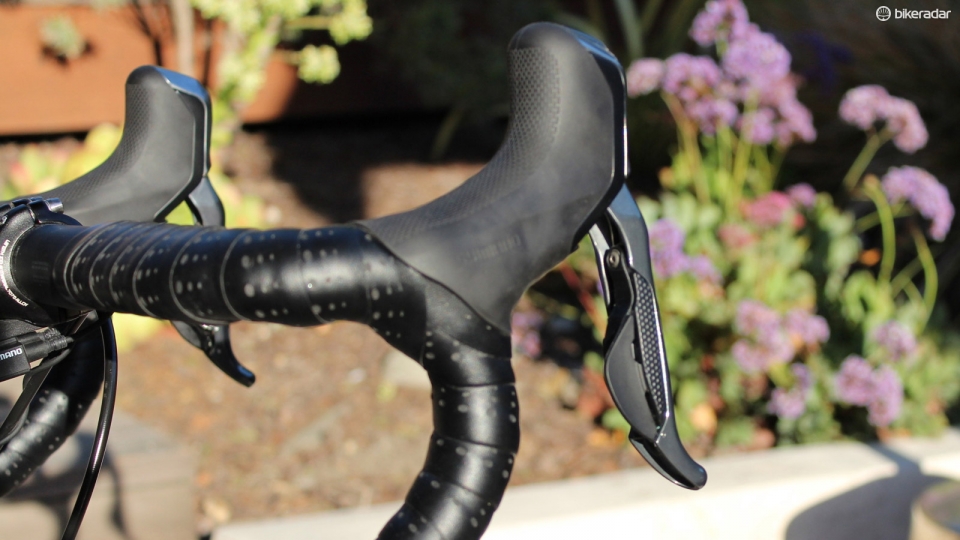
Shimano's R785 hydraulic/electric levers are in a class of their own
We enjoyed the single-finger braking of Shimano's hydraulic R785 discs. On long, jarring descents it is relatively easy to keep your hands and arms relaxed and your speed under control. Only on one long, steep section of a local mountain road with repeated hard braking were we able to get them to squeal. (Read some related thoughts on disc brakes, along with James Huang's fix for rattling levers.)
The Roval Rapide CLX40 Disc wheels, as the name implies, are 40mm carbon rims that we found to remain perfectly true despite some serious abuse. The rim depth and shape are easy to handle in the wind, and ceramic bearings up the performance ante. While some brands' house wheels are cost-cutters, that is not the case here.
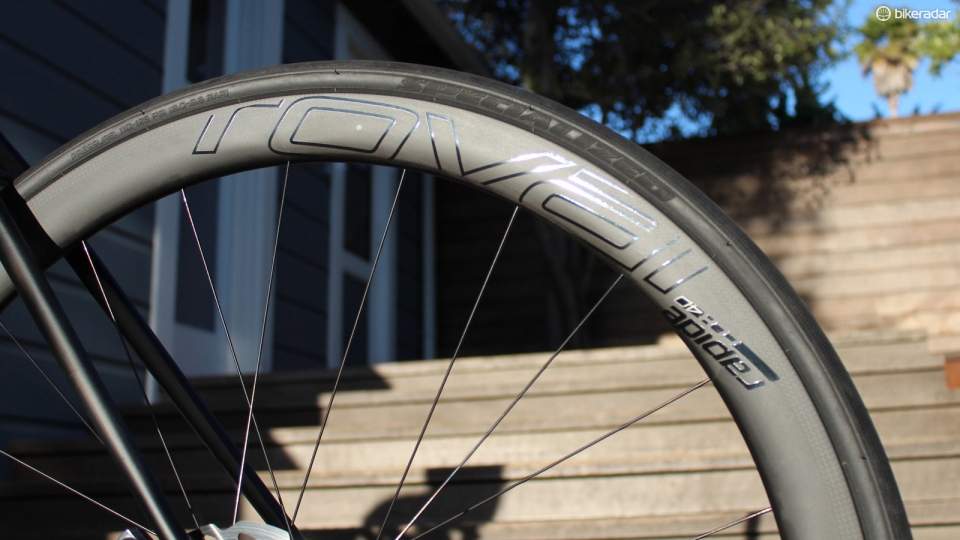
Specialized's house-brand Roval carbon clinchers held up well despite a few hundred miles on dirt (and many more on paved roads)
While some disc-equipped road and cyclocross bikes bikes have followed MTB fashions and employed thru-axles, Specialized is holding the line with standard quick release skewers on the Tarmac Disc, with the notable addition of beefing up the end caps for a wider contact patch.
Significantly for a disc bike with quick releases front and rear, we found the hubs – and thus rotors – stayed perfectly in alignment with the calipers. There is disagreement in the industry about whether or not road bikes with disc brakes need thru-axles. Specialized engineers contend that they do not, so long as there is ample contact surface between dropout and hub.
Our experience on this particular bike seems to support that, although we've had contrary experience on other bikes. On a Specialized Roubaix, for example, we’ve had a rock kicked up by another rider knock the wheel enough to cause disc rubbing and chirping. And just last week, in a harsher situation, we saw a friend’s quick-release disc wheel knocked a few cm (at the outer edge) laterally after a crash on a Specialized Crux with a quick release.
In any event, the CLX40 Disc is a good all-round wheelset: perfectably raceable but durable enough for everyday riding, even if your everyday riding involves dirt road. The question is, are you willing to be married to this particular wheelset until death (or new bike purchase) do you part?
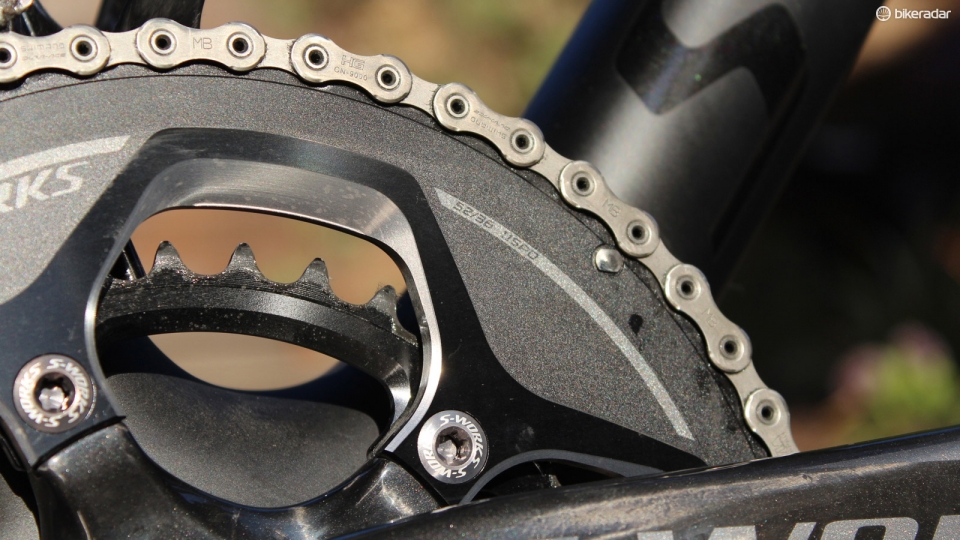
We love the 52/36 combo, but we prefer Shimano Dura-Ace rings to S-Works for stiffness and shifting
One other minor complaint regards the S-Works crank and chainrings. We love the 52/36 ring combination – it’s adequate for mere-mortal racing and helpful for climbing – but the chainrings aren’t as stiff or as perfect in shifting as Shimano Dura-Ace. Also, the two-piece crank spindle eventually starts to squeak and needs regreasing. Not a biggie, but noticeable.
On the other end of the squeak spectrum, aluminum inserts replace molded carbon for the PressFit bottom bracket shell to eliminate creaking from inexact tolerances. We did not have an issue here.
Another small but appreciable detail: The custom Di2 junction box mount rests on the stem bolts, instead of using Shimano’s rather primitive rubber band around the stem. It cleans up the cockpit nicely.
Bottom line: a highly Specialized machine
The S-Works Tarmac Disc delivers the sharp handling and responsive ride of a ProTour race machine with the easy, powerful braking experience of Shimano hydraulics. The big question is, are racers willing to give up wheel compatibility for this luscious combination?
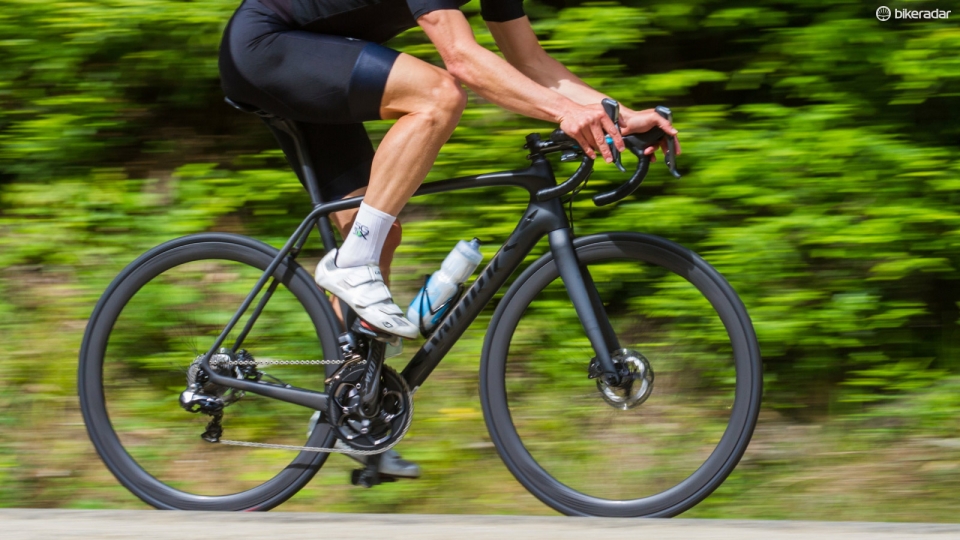
The S-Works Tarmac Disc is in a category of its own
Specification
Name: S-Works Tarmac Di2 Disc (15)
Built by: Specialized
Price: N/A
Brakes: Shimano 785, hydraulic disc, Ice Tech resin pads w/ fins, 140mm RT-99 Ice Tech rotor
Cassette: Shimano Dura-Ace, 11-speed, 11-28
Chain: Shimano Dura-Ace, 11-speed
Cranks: S-Works FACT carbon, OSBB, 52/36, w/ CeramicSpeed ceramic bearings
Fork: Specialized FACT carbon disc with size-specific taper
Frame Material: S-Works FACT 11r carbon with size-specific tubing and bearings
Front Derailleur: Shimano Dura-Ace Di2, 11-speed, braze-on
Front Tyre: S-Works Turbo, 220TPI, folding bead, BlackBelt protection, 700x24c
Grips/Tape: Tape - Specialized Classic, w/ gel
Handlebar: S-Works SL Carbon, shallow drop, 125mm drop, 75mm reach
Head Angle: 73.5
Rear Derailleur: Shimano Dura-Ace Di2, 11-speed
Rear Tyre: S-Works Turbo, 220TPI, folding bead, BlackBelt protection, 700x24c
Saddle: Body Geometry Toupé Pro, carbon rails, 143mm
Seat Angle: 73.25
Seatpost: S-Works FACT carbon, 20mm offset, 27.2mm
Shifters: Shimano 785 Di2, 11-speed
Stem: S-Works SL, alloy, 4-bolt
Trail: 5.6
Wheelset: Roval Rapide CLX 40 SCS Disc, w/ CeramicSpeed ceramic bearings
Year: 2015
Chainstays (cm): 40.5
Seat Tube (cm): 50.1
Top Tube (cm): 56.5
Wheelbase (cm): 98.6
Frame size tested: 56cm